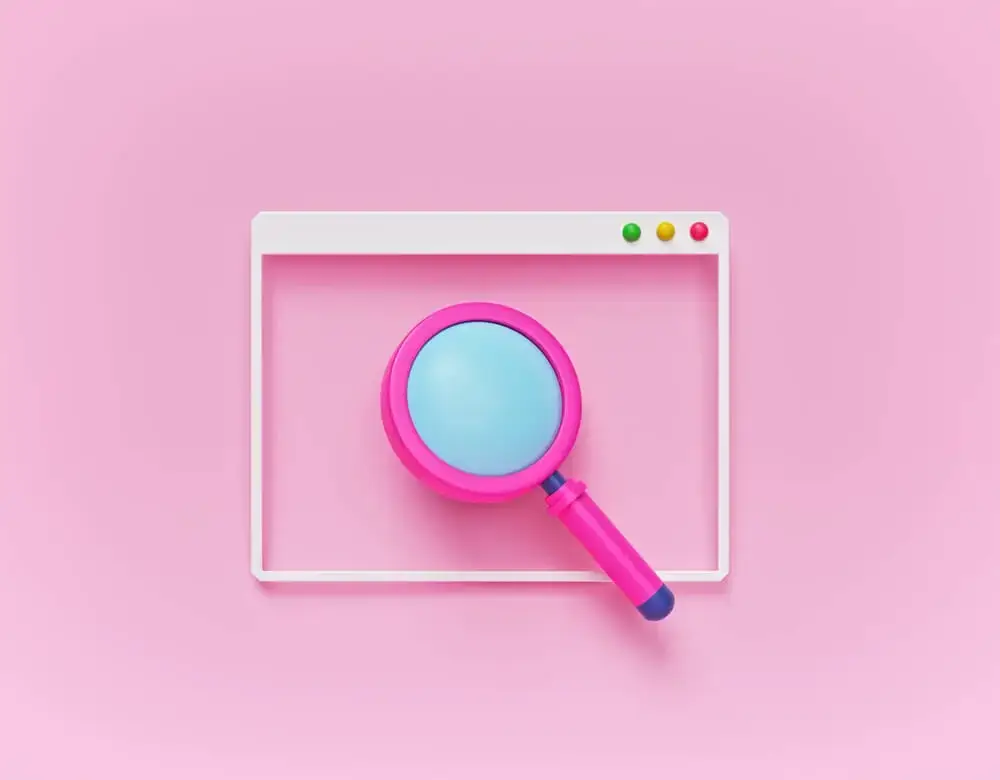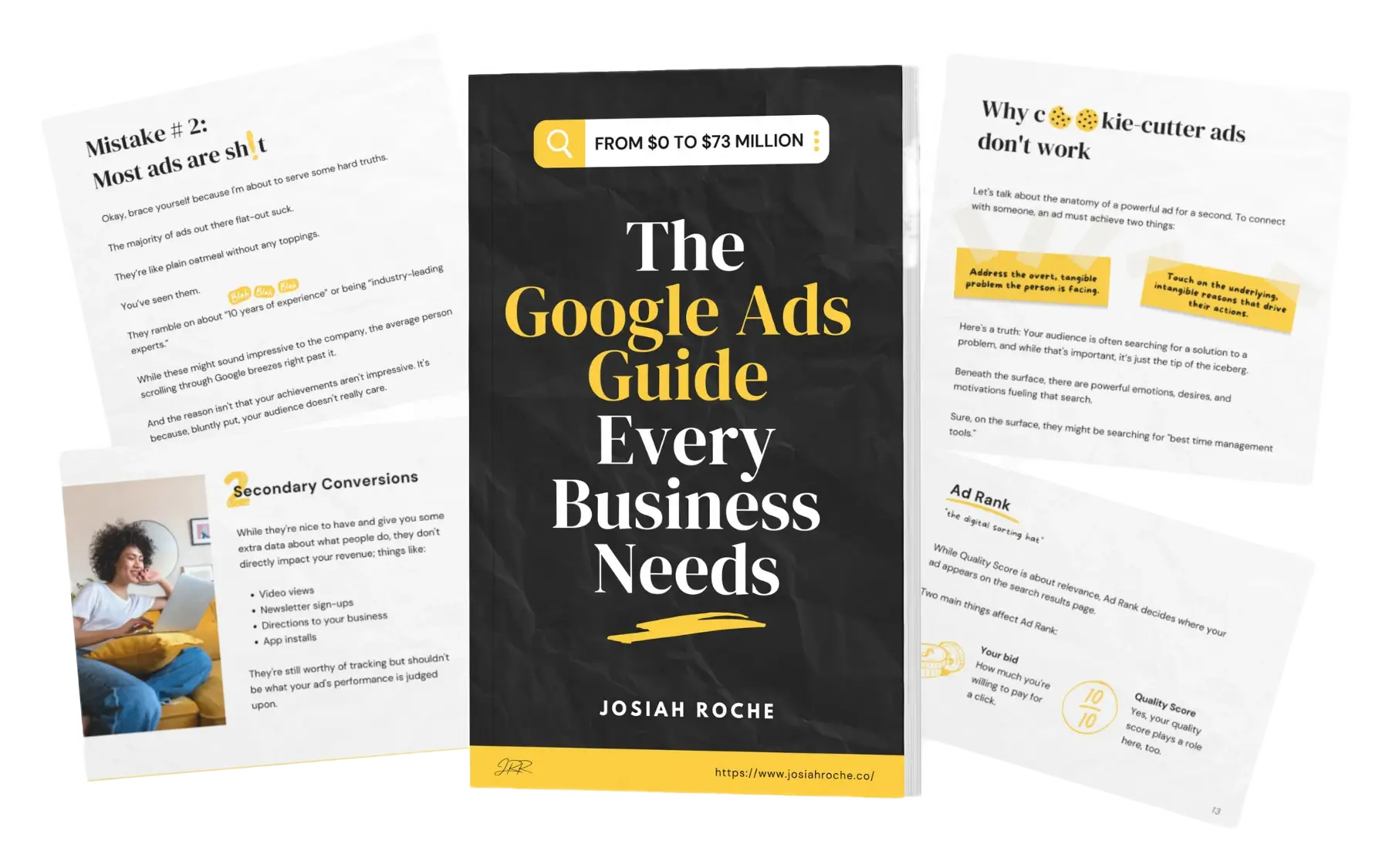Whether you’re a small business or an established brand, you’re missing out if you haven’t learned to utilise the potential of Google Ads.
So many businesses flock to Google Ads because it eliminates the idea of bothering people on social media.
Instead, you can intercept them when they’re looking for a solution to their problems on Google – meaning you’re not harassing them – you’re helping them.
We’ll dive more into this later.
But first things first. What exactly are Google Ads?
To quote Google:
“Google Ads is Google’s online advertising program. Through Google Ads, you can create online ads to reach people exactly when they’re interested in the products and services that you offer.”
In short, Google Ads makes it easy for businesses of all sizes to deliver accurate and relevant ads to their target audience.
So why choose Google Ads over, let’s say, Facebook or Instagram, or even Youtube? Is Google Ads superior to all the other platforms?
The reason is search intent
Think of it this way. Why do you visit Facebook or Youtube?
Most people are there to connect with their friends and family or consume entertaining content.
They’re not looking to buy anything.
Whereas Google is specifically designed for people looking for solutions to their problems. You come to Google to seek answers, right?
Therefore, wouldn’t it be better to advertise to people actively searching for an answer to their problem?
Google Ads provides you with enough options to ensure that the right people will see your brand.
It takes technical knowledge and high-level strategy to know which keywords to use.
If you want a formal introduction to Google Ads, read more here.
Now, to answer your question: why is Google Ads a viable option? Here are 10 ways to use Google Ads to unlock explosive growth for your business.
1. Everyone’s using Google
As you know, Google has become so ingrained in modern culture that its name has become a verb.
Everyone knows what Google is. And almost everyone uses it daily. Google’s search engine handles a mindboggling 2 trillion searches per year.
And among all those searches, there are people ready to buy things, whether it’s new shoes or hiring an emergency locksmith.
All you need to do is to ensure your brand is visible to people who’re in-market for what you offer. Because if you’re not seen, your sales will tank.
2. Ideal for every stage in the buyer’s journey
Not every prospect is in the same stage in their buying cycle. Understanding the process of the buyer’s journey is imperative for any successful marketing strategy.
For example, if you bid on keywords such as best coffee as a broad match type, you will likely enter ad auctions for all kinds of people in their journey.
E.g you could show up for searches around:
- What is the best coffee bean?
- What are the best coffee beans made out of?
- What are the best coffee barista courses?
- What do I need to know about making the best coffee?
Prospects in these early stages of their journey belong to what we call the top-of-funnel (ToFu) audiences.
These people are only recently problem-aware. They’re informing themselves and researching the topic.
They’re not ready to buy anything yet. Let alone know that they need to buy something.
This is the perfect opportunity to use Google Ads to drive traffic to helpful articles around these (ToFu) topics.
By doing so, you educate and inform people on their journey and become top of mind later in the funnel.
On the other hand, if you bid on bottom-of-funnel (BoFu) search terms, such as “Best Google Ads Consultant in Sydney”, your ad will likely target people with a stronger buying signal than those of ToFu-related queries.
This is an excellent opportunity to showcase your sales landing pages with a powerful offer, social proof, testimonials, etc.
Because we already know the prospect is in-market and on their way to finding a suitable provider.
As you can see, knowing the intent of your prospects and which keywords to bid on is integral to creating a successful Google Ads strategy that will bring you predictable sales on demand.
3. It’s better than interrupting people on social media
As we mentioned at the beginning, what makes Google different from other channels is its users’ search intent.
People on social media are not there to buy anything (aside from Facebook Marketplace and other IG features).
They are there to seek entertainment and connect with their community, friends and family.
When your ad is shown on social media, many people scroll past it because it’s treated as a nuisance, an interrupting factor.
This means that your brand is associated with something to be ignored.
On the other hand, people who come to Google expect to see ads. They welcome ads as long as the ad is helpful.
If you want to learn more about how people use Google, Backlinko has an excellent in-depth study on how people use google for research.
4. You can have more control
On social media, you have many targeting options: interests, behaviours, demographics, psychographics, and your data for remarketing.
But you can’t target people based on what they’re actively searching for. And it’s the exact reason why so many advertisers prefer Google Ads.
Let’s face it, Facebook and Google are the two big players in the room. They both have a lot of the same functions from an advertising perspective.
But Facebook isn’t as powerful because Google controls a large part of the internet’s economy.
In a previous section, I noted that everyone uses Google. And YouTube is the second-largest search engine on the planet. Google owns both.
Furthermore, most publishers use Google Adsense or other third-party ad placement platforms that utilise Google’s network.
Which is the same network you and I can utilise to run powerful, dynamic and relevant ads that follow people around the internet: on search, YouTube, and websites.
With Google Ads, you have control over who will see your ad, and you can reach either new prospects or existing customers, even in their Gmail inbox.
It’s crazy the level of targeting you can utilise with Google Ads.
You can target people when it’s rainy vs sunny, push seasonal products in Spring, and show your ad only for when the best time of day is to get ice cream.
If you want to learn more about using Google Ads for your business, I wrote an article that will teach you how to use Google to advance your business goals.
5. It’s affordable on most budgets
Most advertising platforms will charge you per impression. Worse, social media has been infamous among advertisers for charging for false clicks and landing page views.
That means it’s hard to accurately measure what you’re paying for if you’re not tracking conversions (highly recommended).
Conversely, Google allows you to choose Pay-Per-Click (PPC) bidding strategy, which means you will be charged only when someone clicks on your ad.
Although PPC bidding does not guarantee conversions, you can tell Google to pay per conversion or optimise the ads for ROAS goals. The sky is the limit.
One important thing to remember is that the price of each keyword is different because there are other competitors in the market bidding for them.
Your competition is the leading factor that will determine your cost-per-click (CPC).
The keyword “best Google Ads Agency Sydney” will probably be more expensive than “best Google Ads consultant in Albury” simply because there will be different market saturation levels for each keyword per location.
Sometimes if you’re not careful, your PPC campaigns can compete against each other because of the number of combinations you can have. But there are ways to avoid that.
6. It’s easy to use and understand
Navigating the analytics dashboards of some platforms can be a nightmare. And can quickly prevent you from making any strategic insights.
Google has invested a lot of effort into making the Google Ads dashboard simple and accessible for everyone.
After you gain some mastery over it, I suggest integrating Google Analytics into your mix to gain access to better insights, allowing you to optimise your website and your ads.
If you want to learn more about Google Analytics and how it can help your business grow, you can find a simple and easy-to-read guide to Google Analytics here.
7. It helps you get fast results to test hypotheses
While you should never underestimate the power of organic growth through SEO, the results it brings come much slower than running some Google Ads.
You must utilise proven SEO strategies, careful keyword planning, and awesome content (plus partnerships) to be among the top search results.
And this takes a lot of time. Sometimes up to 12 months, depending on your keyword competition.
Google Ads allows you to ” rent ” the search results’ top spaces without waiting months to be seen from SEO efforts.
8. It improves your brand awareness
The road to success is never a straight path. Your marketing is no different.
No silver bullet or magic hack will skyrocket your revenue overnight. It simply doesn’t exist.
Not everyone is ready to buy, even if they’re your ideal audience.
Though, it’s not necessarily bad if someone clicks on your ad but doesn’t buy anything.
It’s what many Fortune 500 companies expect when they run ads.
They do it because of brand awareness and increasing the likelihood that their brand is top-of-mind for your next purchase.
Every time you appear on top of search results, you reinforce your brand’s name and build your reputation as an authority in your space.
That’s if people are paying attention anyway. From a subconscious level, we all are.
With brand awareness, consistency is the key.
You will gradually become top of mind with your prospects by constantly being among the top search results, in product feeds, or being shown on YouTube.
This may lead to eventual sales, which is every brand campaign’s end but an indirect goal.
9. It creates synergy with your content
The quality of the content a potential prospect will find after clicking on your ad is crucial in determining your campaign’s success.
We call this the landing page experience.
In a nutshell, if the user finds your landing page helpful and has provided accurate answers to their questions, Google will recognise the quality of your ads (a.k.a. quality score factors) and help you rank higher in the search results.
But to achieve that, you must create persuasive landing pages that offer visitors precisely what they came for, whether it’s a money page or a blog article.
To help you, here’s what Google Survey revealed about what users want from a mobile landing page experience.
10. It offers different ways to help you grow
Google Ads offers you a range of strategies that you can use to maximise your ROI.
Whether you want to focus on getting more clicks, impressions, or conversions, Google has a strategy to help you achieve your goals.
Once you have a clear vision of your goals, it’s time to implement Google Ads bidding strategies. Here are some of them:
- CPC (Cost-Per-Click) Bidding is ideal if you want to generate more traffic for your website. By using this strategy, Google will charge on a per-click basis.
- CPM (Cost-Per-Impression) Bidding is best for building brand awareness and allows you to choose how much you’re willing to pay per impression or 1000 people who will see your ad.
- CPA (Cost-Per-Action) Bidding is best when you want to optimise for specific goals such as conversions or signups. With this strategy, Google charges you whenever that particular goal is reached.
- CPV (Cost-Per-View) Bidding is recommended if your goal is to maximise the number of views and interactions with your video ads or to get your product out there and increase the brand’s visibility.
And, of course, if your goal is to get those conversions and you’re not sure what to do, you can always opt for Smart Bidding and let Google’s automated strategies do the heavy lifting for you.
But I recommend you use Google’s smart bidding with caution. Automatic recommendations are almost always lower performance.
As you can see, Google has numerous ways to help you succeed.
If your goal is to build brand awareness and maximise visibility, you should stick to strategies that focus on presenting your ad to the maximum number of people in your market.
And vice versa, if your goal is purchases and conversions, ensure you implement strategies targeting people most likely to convert (CPA and ROAS goals).
Is Google Ads a Viable Option For You?
I hope this article makes you realise how viable Google Ads is for your business.
Instead of asking, “Is Google Ads a viable option” you should ask, “How is Google Ads NOT a viable option”.
Because there is no real reason you shouldn’t use Google Ads as part of your digital marketing mix.
Whether you’re a small start-up or among Fortune 500 companies, Google Ads benefits every stage in the buyer’s journey.


